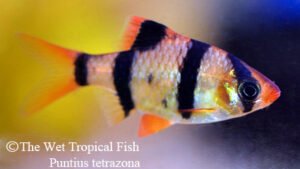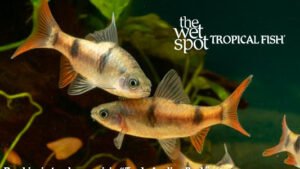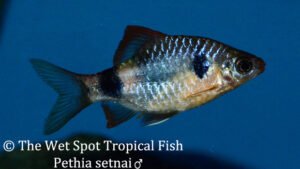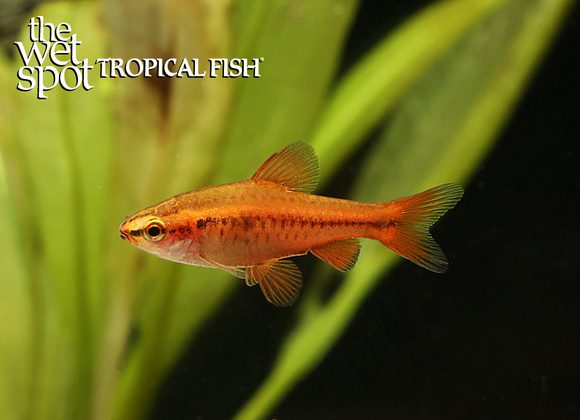"Cherry Barb"
Rohanella titteya
$3.99 – $4.99
This fish was previously known as Puntius titteya and was reclassified into Rohanella in 2023! Please note that the fish shown in the photo is not the exact fish you will receive and is only a representative of what a specimen will look like. The color may vary based on the age and sex (if listed as unsexed) of the fish you receive
Description
Puntius titteya, also known as the Cherry Barb:
**Max Size:**
– Adults typically reach a maximum size of about 2 inches (5 cm).
**Tank Requirements:**
– A tank of at least 20 gallons is suitable for a small group.
– Provide hiding places using plants, driftwood, and decorations.
– Use plants like Java moss and floating plants to create natural environments.
**Water Parameters:**
– Temperature: 68°F to 81°F (20°C to 27°C).
– pH: 6.0 to 7.5.
– Hardness: Soft to moderately hard water.
**Tank Setup:**
– Incorporate live plants to mimic their natural habitat and provide hiding spots.
– Use subdued lighting to create a comfortable environment.
**Feeding:**
– Omnivorous species with a varied diet.
– Offer high-quality flake food, micro pellets, and supplement with small live or frozen foods like daphnia, brine shrimp, and bloodworms.
**Behavior and Compatibility:**
– Peaceful and social fish suitable for community tanks.
– Keep them in groups of 6 or more to reduce stress and encourage natural behaviors.
– Compatible with other small, non-aggressive fish.
**Water Maintenance:**
– Regular water changes of 20-30% to maintain water quality.
– Monitor water parameters and ensure stability.
**Breeding:**
– These fish are egg scatterers.
– Provide fine-leaved plants or a spawning mop for them to lay eggs.
– Consider a separate breeding tank to protect the eggs from being eaten.
– Raise the fry on infusoria and later baby brine shrimp.
**General Tips:**
– Observe their behavior to ensure their well-being and interactions with tankmates.
– Maintain a clean environment and proper nutrition for their health.
– Avoid overfeeding and overcrowding, which can lead to health problems.
Remember, while the above information provides a general guideline, individual fish may have their own preferences and behaviors. Regular observation and adjustments to care are important for maintaining the health and happiness of your Cherry Barbs.
Related products
-

"Burmese Bumble Bee Barb"
$6.99 Out of Stock This product has multiple variants. The options may be chosen on the product page
Pethia tiantian -

"Tiger Barb"
$3.99 – $4.99 Select options This product has multiple variants. The options may be chosen on the product page
Puntigrus tetrazona -

"Trade Arulius Barb"
$8.99 – $29.99 Out of Stock This product has multiple variants. The options may be chosen on the product page
Dawkinsia tambraparniei -

"Indigo Barb"
$8.99 Out of Stock This product has multiple variants. The options may be chosen on the product page
Pethia setnai

